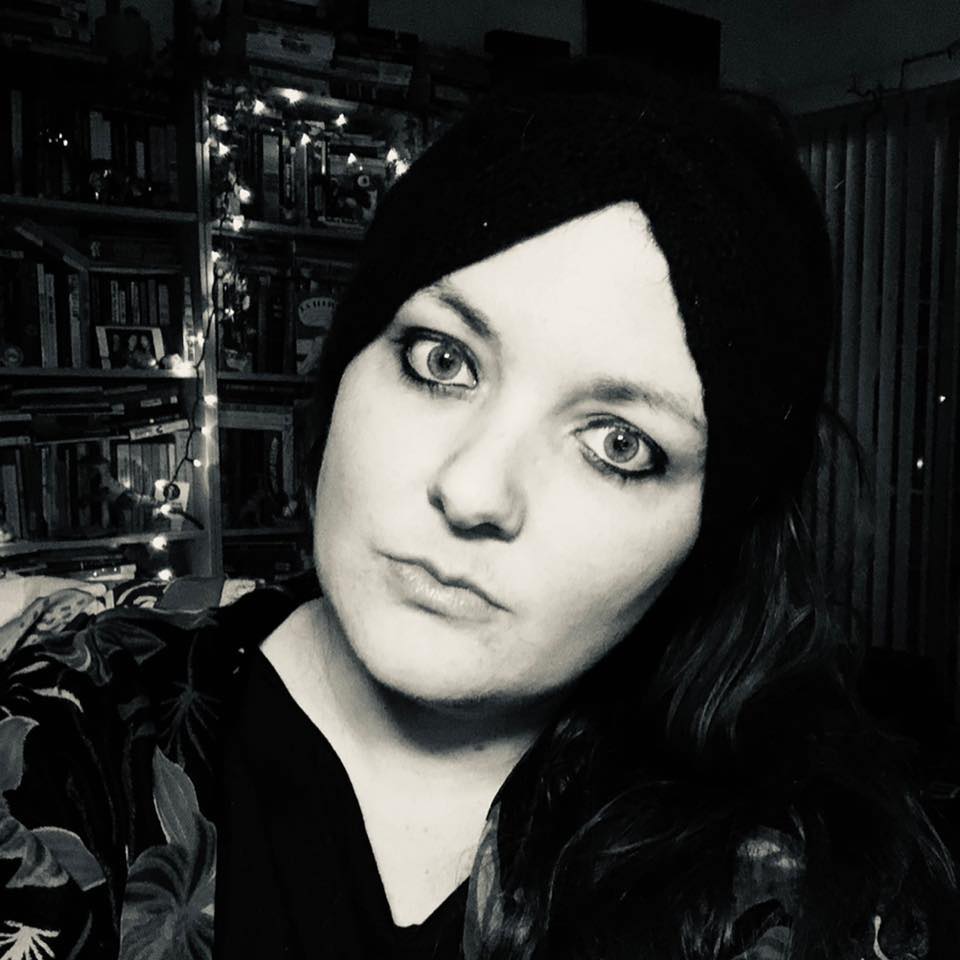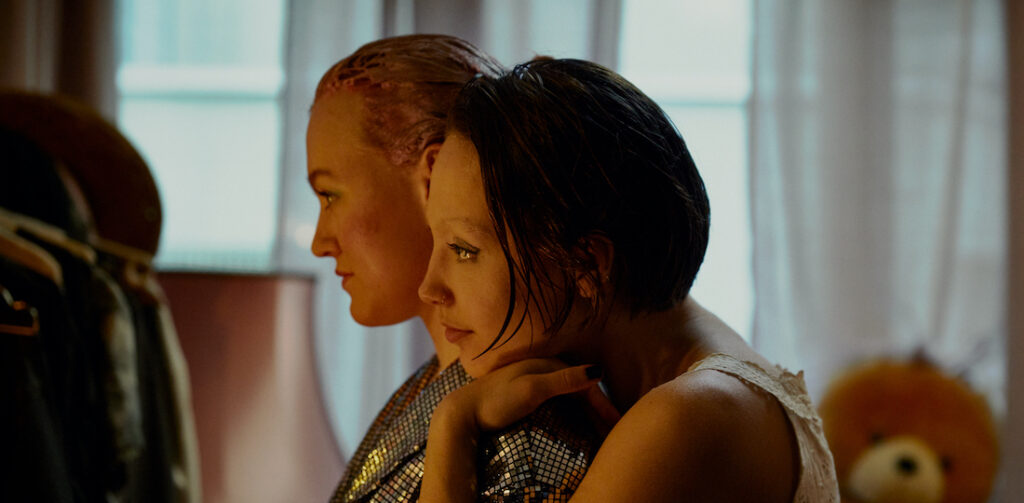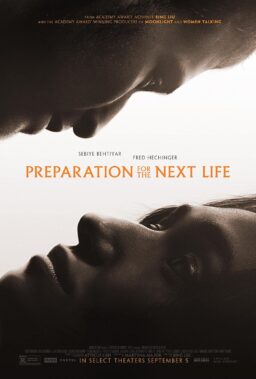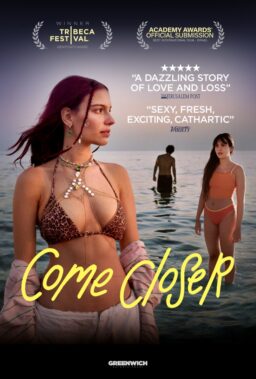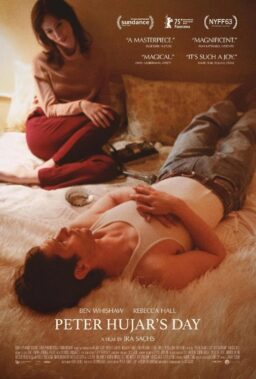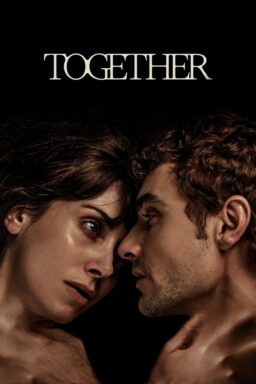Debuting in World Dramatic Competition at the Sundance Film Festival earlier this year, where it won the Audience Award, Alli Haapasalo’s “Girl Picture” is an irrepressibly girly coming-of-age film. Set over three Fridays, it follows teenagers Mimmi (Aamu Milonoff), Rönkkö (Eleonoora Kauhanen), and Emma (Linnea Leino) as the trio fall in love for the first time, search for carnal pleasures, and navigate the liminal space that is being a teenage girl. Unabashedly horny and strikingly intimate, Haapasalo’s film treats each girl’s emotional and physical journeys with nonjudgmental honesty. With buoyant performances at its center and charm to spare, “Girl Picture” should be well on its way to a spot in the female friendship film hall of fame.
Featuring a script by Ilona Ahti and Daniela Hakulinen, “Girl Picture” is the third film from Finnish director Alli Haapasalo. With degrees in film from Aalto University and New York University’s Tisch School of the Arts, Haapasalo finds herself drawn towards strong female driven stories. Her debut feature film “Love and Fury” chronicles a female writer’s journey to finding her own voice. Written and directed by a collective of seven writer/directors, her second film “Force of Habit” peeks at hidden moments in the lives of everyday women to expose gender bias and structural misuse of power. Now with the breakout success of “Girl Picture,” from its Sundance win to its release around the globe, Haapasalo is poised to be a filmmaker to watch for years to come.
For this month’s Female Filmmakers in Focus column, RogerEbert.com spoke to Haapasalo over Zoom about reclaiming the Finnish word “tytöt” (girls), achieving true intimacy on film, and the importance of feeling seen on screen.

I really loved that it was set over just three Fridays, and yet so much happens to these girls. When in the process with the screenwriters Ilona Ahti and Daniela Hakulinen did you land on this structure? It felt really honest.
That was actually a really big, key moment for us. In terms of being able to pull it together, we developed it for probably three years before figuring out the structure. The balance between the three characters and the two plots was always off. Every commentator was always saying I want more of this story, or I want more of Emma and Mimmi, and who was the main character? We had a lot of balance problems. I don’t remember who it was who came up with the three Fridays, but when it happened, things just started really falling into place. I would say it was somewhere from the middle towards the end of the writing process. A fairly late invention, but when you think about it now it seems like oh, of course, three Fridays—what a great concept. But it wasn’t the initial concept at all. I think you’re right, that the really short timespan is key in getting to the point of what the teenage experience is, and the adolescent experience, because literally everything is at stake at every moment. Literally every Friday could change your life.
In your director’s statement, you talk about the idea of these three girls being sort of at the cusp of womanhood. They’re not quite girls anymore, but they’re not quite women. They’re exploring all the nooks and crannies of this time in their life. It’s getting better, but you still don’t see that many films really focusing on sexual development. I particularly love the girl who just wants to have pleasure, to find real pleasure.
I think that was the most difficult thing of teenage life in a way, you know, because you feel like a child and an adult at the same time. Everyday, you can fluctuate between the two experiences all the time, too. It’s a difficult thing to be with yourself, when it’s so difficult to define who you are. A friend of mine, who’s a producer, said that she thinks this is a film about the need to be seen. I thought that was pretty well put because whoever is closest to you can help you see yourself. They’re kind of using each other as mirrors, in this aspect, asking what does it mean to be a woman? What does it mean to be a teenager? There’s a lot of no’s put on that age. What it shouldn’t be and how you shouldn’t act and what you shouldn’t wear and what you shouldn’t say and what you shouldn’t do. That can get really exhausting, so as a teenager you’re basically trying to navigate both what it means in the world to be a woman. What it’s like and what is allowed and what’s expected, but at the same time figuring out who you are as a person. Your identity and your sexuality and what you need and what you want. It’s all of those things happening at the same time.
Do you think that with the internet and with all of the ways we have now for communicating that Gen Z is maybe more in touch with seeking female pleasure than previous generations, or at least thinking about it earlier?
Oh, that’s a good question. I’m not sure if they are more in touch with seeking pleasure, but I think they’re better at defining their needs and their rights. They’re not as submissive as my generation. I’m Gen X, or I’m born in 1977, and I spent my whole teenage life thinking that women and men are equal, and then my whole young adult life finding out that wasn’t the case at all. But I look at these women in the leading roles, and they are much better at putting their foot on the ground and demanding what they need and drawing their borders and saying, “You don’t cross this.” I’m all for it. They’re really good at that.
But honestly, I don’t know if they’re better at figuring out the right to female pleasure without punishment, for example. I’m so used to the idea that if a woman says, “I want pleasure,” it’s like you’re immediately a slut. That’s my generation’s judgment on it. I would think that it’s a little bit better, but I also think this is probably a very layered issue and very regional, and big political issue obviously.

The original title “Tytöt tytöt tytöt” translates to “Girls Girls Girls,” which obviously has a negative connotation, but you sort of reclaimed that title and what that could mean.
In Finnish, it’s an idiom that you actually say, like, “Tytöt tytöt tytöt.” Here you’re not supposed to say “tytöt,” in Finland, because that’s supposed to be belittling. And I refuse that. I was told very early on by a production assistant that I should say “young women,” and I said no, I will absolutely not have a negative connotation to the word. I will do everything in my power to reclaim it, and just use it proudly. So the title is trying to say that we don’t care that you have this wagging of the finger tone with it usually. Instead it’s saying it in a jubilant way. Like, yeah! Girls, girls, girls! In the UK, they’re releasing the film with the English title, “Girls, Girls, Girls.” The reason I didn’t originally go with that was all I could think of was neon bar signs going girls, girls, girls, and I thought that it wouldn’t work in English. But apparently it’s not a problem there.
Definitely the first thing you think of in the US is like a strip club or something. Either way I think it’s interesting and subversive. How did you come to cast the three leads?
I started casting the same week COVID arrived in Finland. So normally, we would have done very extensive auditions with young women with a casting agent. But we went with self tapes first. So I got 155 self tapes to watch. It was a generic scene for the first round, so that wasn’t specifically for which role. It was just finding exciting and charismatic and talented actors. I gave them a little bit of a difficult scene, so that if they didn’t figure out what the turning point was, that told me a lot about their understanding of dramaturgy. Then from that bunch, I believe we chose 50 for actual auditions. I wasn’t present, but every actor read a scene with a casting agent. That was really exciting. They did it several times, all these scenes, they repeated many times. I started to feel from those tapes already drawn to some of the actors. I remember in the first round, two of the actors that ended up in the leading roles were really strong already in self tapes. The third round I did really long callbacks. I was there myself, and I directed them a lot.
It took a lot of time. The whole process was three months. I wanted to be slow with it because I knew that if I made any mistake in this, the feeling would just die. The testing is never about just the individuals. But here even more so than ever before, it was about the triangle and the band. The second you change one of them, everything changes. You might not be able to change one. It’s a trio. The callback tapes I didn’t even have to watch, I just knew and I called them the next day and told them myself that they were selected.

I really loved the intimacy that you got from the girls, like when they’re helping each other with their makeup. I always love to see things that feel real like that. How did you build that intimacy up?
Basically I checked with all of them if they were free for several months before we shot and if they were ready to jump into an extensive rehearsal process. I only wanted to cast people who could do that. They all embraced it, they loved it. Because this way, of course, they could also feel safe with their characters and with me and with each other. So we rehearsed for several months. Not every day, but we saw each other under the course of three months quite a bit. We rehearsed every intimate scene with an intimacy coordinator. All the choreography was very well defined. We talked about every single aspect of the characters’ lives. And of course, when you do that, you share a lot of intimate details of your own experiences. So that really made us friends. We’re friends now. They could trust me. I’m 20 years older than them—and there’s terrible stories about directors who do intimate scenes—so it helped a little bit that I’m a woman, but I still needed to gain their trust to give this kind of intimacy to the film. And I needed to trust them that they’re able to actually deliver and really be there and really be the characters. So it was kind of a process of not just rehearsing the key scenes, but really getting to know each other and building trust.
For film itself, intimacy was one of our main key words actually, in any of our artistic planning. That makeup scene, I really love the fact that while one’s putting on her makeup, the other is feeding her candy. That’s a really nice detail that I think I stole from an American documentary called “All This Panic.” It was a big visual reference for us because it felt so vibrant, and had all these qualities of realism and identifiability for us as well. So intimacy was a really big thing and intimacy in the sense that it feels like these girls’ story. I didn’t want it to be like a 44-year-old woman is looking nostalgically at teenage life; that would be terrible. I never thought about the film as a teenage film. I realized that there’s lots of people who want to think of the target audience and who to sell it to. That kind of thing. But to me, I just wanted to make a good film. I wouldn’t know if you asked me how to make a teenage film.I have no idea. I never problematize that. I just tried to make this story about these girls, as well as possible, and I think that creates the intimacy and respect that the film has for the characters.
I love the way that you use the tight 4:3 frame to really zoom in on their lives. Again, it’s such an intimate way to frame bodies. At what point did you decide to shoot it that way?
It was the genius of DP Jarmo Kiuru. This was the third project that I’ve done with him, and he was so nervous about suggesting it to me that he didn’t say it to my face. He sent me a message with a long list of reasons why we should do it. The first thing I thought of when I read his suggestion was 4:3? He’s crazy. Then I immediately realized that he’s a genius for suggesting this, and the reason is, you already said it, it’s intimacy, it’s a very intimate frame. It’s a very respectful frame. It’s almost like a portrait frame. It’s also really intimate in terms of bringing two people together, because if you want to have two people in the same frame, they really need to be close to each other.
It’s also, actually as a bonus, turns out that it’s very good for shooting ice skating, because you get more of the physical experience, rather than the white ice. Also, I didn’t even think about this, but it’s also kind of a modern frame. The youth of today, they do photography in that frame. Obviously Instagram is square. iPhones take 4:3 photos. To me, it’s an old ratio. The Academy ratio from my childhood, I hated it in film school. Then, everybody was adding black bars because the wider the better. So that’s why I was wary in the beginning, but I think it was a really great choice and a really brilliant idea from Jarmo.

The settings are really interesting, in that you mostly have just a few places. There’s the party settings, the juice shop at the mall, and then occasionally their bedrooms. But a lot of the action happens in those places because that’s where their lives are led.
The difficulty with the three Fridays structure was that we didn’t actually have a lot of places that would really represent the girls’ lives in a very intimate way. The only scenes that really take place in a girl’s room is the scene at Mimmi’s own home. That’s why it’s also my favorite because it kind of encapsulates them best. If I pick up any film stills, that’s the place I go to. Because otherwise, if you take a film still from the smoothie shop, for example, it’s like working girls, or if you’re taking it from the gym class at school, it’s like a high school film that takes place in school. But this is not that. If you take a still from the party, it’s like saying it’s like a party movie. This is not that either. So it’s actually kind of a difficult thing, if you think of just choosing one place. But when you see it in the structures, the three Fridays, you realize that these are the backdrops in front of which teenage life happens.
Production designer Laura Haapakangas had a really beautiful idea of trying to create spaces that also included this idea of liminal space. For example, when Emma dances her ice skating routine for Mimmi, instead of just putting it on a parking lot, we put it with a backdrop of a city being built, which is obviously supposed to be a metaphor for the lives being built and everything being in fluctuation or in a process of growing. There’s a lot of layers and a lot of details in the backdrops of those, but in a way it was difficult because they are also generic. It’s someone else’s party. It doesn’t tell about your characters, but then it has to talk about their lives and where their lives are taking place. It was a big question and big process
How do you hope people feel once they’ve finished watching the film?
I hope that they feel like these girls’ lives actually really continue after the film. That’s kind of like the last shot. I want them to feel like life goes on. I want them to love them and then love themselves. I hate the phrase feel good, but the truth is, it’s a feel good film. I want people to feel good. Also, it’s a very political film. In Finland, I’ve had the opportunity of having many screenings with people where it opens a conversation. In many cases, it opens a really big box, a Pandora’s box, if you will, for some audience members. They’ll say, “I’m disturbed about how long I was waiting for something bad to happen. What’s wrong with me? Why am I so biased that I think something really terrible has to happen to these women? Why am I expecting it?”
Many people talk to me about how they feel seen for the first time. Both the writers, the cast, and I have encountered people who come crying after the film talking about their asexuality and how they’ve never ever seen a character depicted with any level of that on screen. So I hope that it opens a conversation. It definitely brought a lot of very positive feelings to people. To me, it is obviously a very, very beautiful thing that there are so many people who have identified with it and felt really emotional about it. But that also makes me quite angry. That it’s such a big thing, that so many people have said it was the first time they felt seen. I don’t even have words for how that shouldn’t be in 2022.
Are there any female directors that either inspire you or that you just think are really cool, and maybe people haven’t heard of and they should?
The first ones who come to mind are the ones who are close to me. I don’t know how well Americans know Ninja Thyberg from Sweden, but that’s certainly a name that they should check out. I’m sure “Pleasure” has already brought her a lot of attention. Then there’s some really exciting Finnish directors like Jenni Toivoniemi. She made her directorial debut two years ago, and I think she is working on a really exciting sounding horror film that is shooting in Latvia this year. Her film “Games People Play” played little in the US. She won the Sundance Short Film Award 10 years ago for “The Date,” but still only made her first feature two years ago. So that shows you how slowly things advance. Jasmila Žbanić, who directed “Quo Vadis, Aida?”. I was totally trashed by that film. I had never heard of her, but I became her biggest fan. I couldn’t go home after seeing the film. I had to calm myself down by walking around. It was crazy. 1,000 more names come to my mind. I’ve become a really big fan of Mia Hansen-Løve, but she’s already famous. And of course Céline Sciamma.
I think they’re both on their fifth or sixth feature films, which is rare. There’s only a handful of women who’ve managed to do that and be well known. Lots of women have made that many but remain relatively obscure. It’s sad that we’re in 2022 and we’re finally having some of these names people would recognize. You can say Céline Sciamma to any cinephile in America and they would be able to name at least two of her films. Do you have any other recommendations?
[Laughs] I’m going to be spending the whole rest of the night thinking, “Why didn’t I say her?!”
“Girl Picture” will be available in select theaters starting August 12th.
